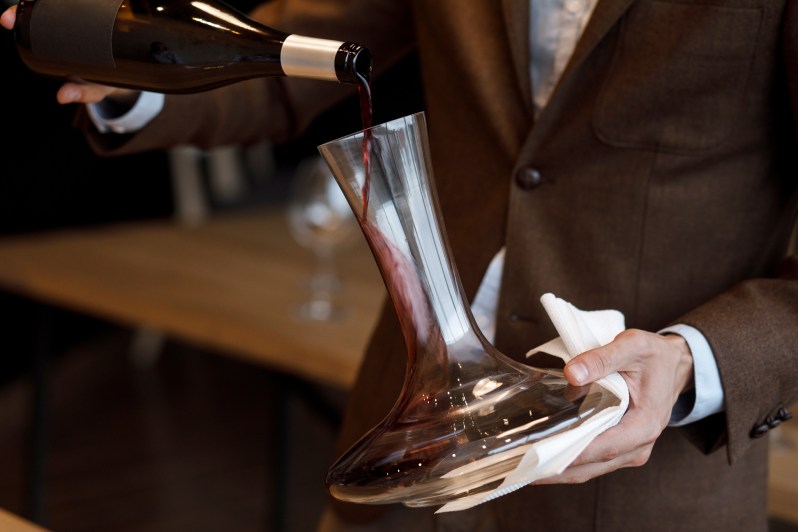
Decanting wine isn’t just a flourish for pretentious dinner parties. It actually serves a purpose. As wines age, the color pigments and tannins in the wine bond together and separate from the rest of the fluid, sort of how milk will separate into a layer of thick cream at the top. Only in the case of wine, the separation creates a sediment that sinks to the bottom of the bottle.
Simply pouring this wine out of the bottle can mean getting a mouthful of grit, which can sometimes even be bitter … it can definitely kill the experience of enjoying a fine glass of red.
Decanting allows you to filter the sediment out of the wine, leaving the appearance and taste clear and vibrant. And as an added benefit, decanting aerates the wine so that the aromas and flavors really bloom.
Which Wine Should You Decant?
Wine drinkers may not be surprised, but it is almost exclusively red wines that need to be decanted. White, rose and sparkling wines rarely produce sediment. An exception would be white wines that are “skin-contact” vinted (i.e., the grapes are fermented with the skins left on). Experts agree that if a white wine offers a sulfurous aroma, it will benefit from being decanted.
It doesn’t take that long for sediment to accumulate in a wine — just five to ten years after being bottled is enough. And don’t assume that if you can’t see any sediment that it isn’t there. Rather than risk the off-taste, make decanting a rule of thumb.
One of the finer points of decanting is when to actually begin the process. This part does depend on the age of your wine. Older wines (15 years or more) shouldn’t be decanted until about 30 minutes before drinking. (Some argue that these type of wines shouldn’t be decanted at all … which seems counterintuitive, but we thought you should know.) Younger and very full-bodied wines, on the other hand, can be decanted an hour or more before serving.
How to Decant Wine
While there’s no shame in buying a wine decanting tool for this purpose, there’s an undeniable finesse in knowing how to decant wine all by yourself. It’s no more complicated than riding a bike — it takes a few passes to get the hang of it, but with some practice, you’ll have the skills to back up your assertion that this varietal has an “intriguing leathery nose” or whatever.
- The decanting process starts 24 hours or more before drinking your wine. If you’ve been storing your bottles horizontally, select your wine and place the bottle upright. This allows the sediment to slide to the bottom of the bottle, which will make it easier to filter.
- Select the container in which you plan to serve the wine. It can be a decanter, a carafe, or anything as long as it’s clean, clear, and easy to pour from.
- After removing the cork from your bottle, wipe the bottle neck clean. This is more than just good manners, as you’ll see in the next step.
- Hold a light under the neck of the bottle so that you can easily see into the glass. (A candle or even a phone light will work well here, but don’t use a lighter — you don’t want to change the temperature of the wine.)
- While holding the light to the bottle neck, slowly pour the wine into the container. Pour in a steady stream without stopping, but slow down once the bottle is half empty.
- As you’re pouring, keep an eye on the illuminated neck of the bottle. As soon as you see sediment reach the bottle neck, stop pouring. (Note: Sediment isn’t always obvious. It might look like chunks, grains, flakes or even specks of dust; it also might just make the wine’s become cloudy.
- Serve your guests from the decanter and discard the remaining ounce or two that’s left in the bottle.
What to Do with Decanted Wine
If your decanted wine is for some reason not finished, you have two options. If you think you’ll finish it in the next 2 days, go ahead and leave it in the decanter. If you’re not likely to finish it, pour it back into the bottle and remove the air with a wine bottle vacuum pump. This will allow the wine to stay good a lot longer, not to mention protect the flavors from oxidization.


